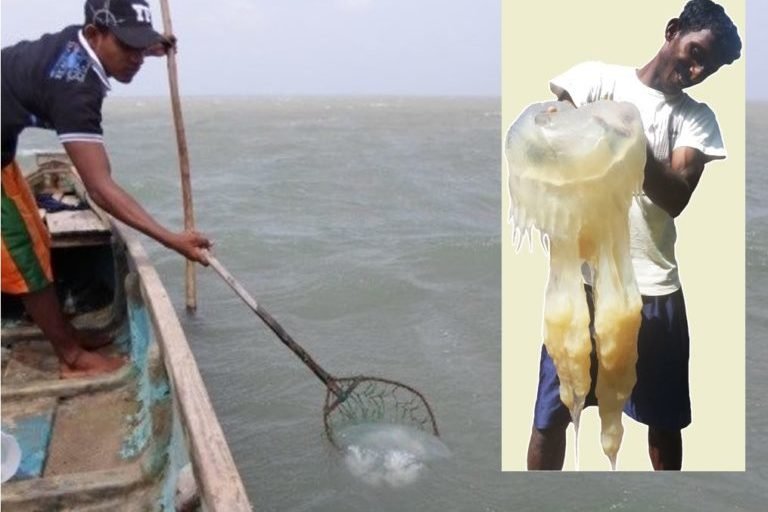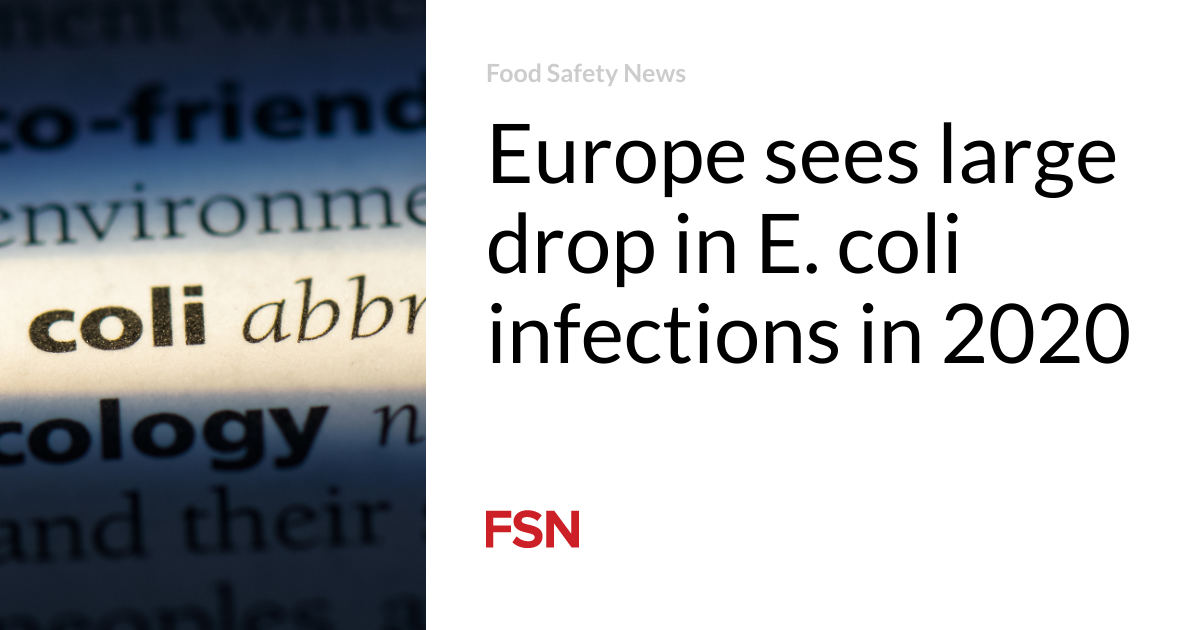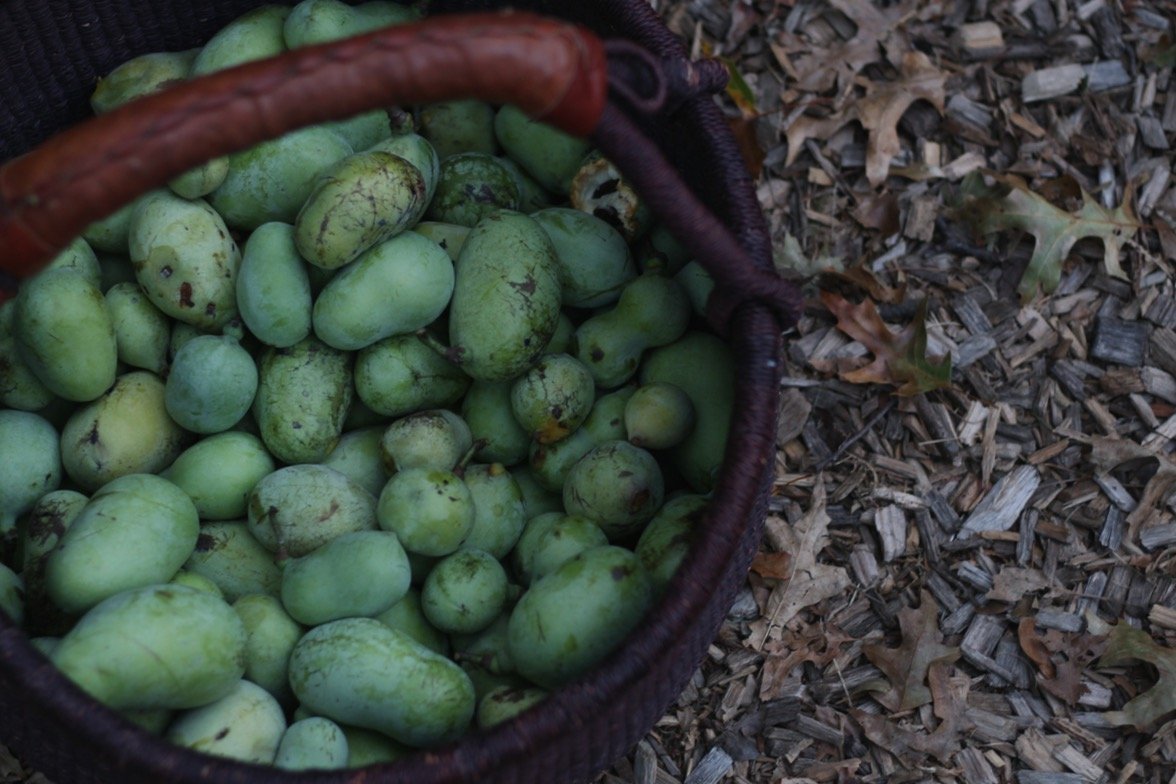- A jellyfish study initiated by the Wayamba University of Sri Lanka has shed light on this ignored marine species that’s rarely been studied since 1905 and contributed to increasing the possible number of jellyfish species found in Sri Lanka to about 150.
- Researchers also described a new box jellyfish species named Carybdea wayamba, also the first species of this genus described from this part of the Indian Ocean, and are working on a number of other species that are potentially new.
- Jellyfish fishery has potential in Sri Lanka and the department of fisheries has made various attempts to popularize it before, but conservationists highlight the need for proper population and distribution study before introducing the new form of fishery.
- Even though the species found in Sri Lankan waters are not lethal, the jellyfish is a medically important species as Sri Lanka records several hospitalizations each year due to stings.
Colombo, SRI LANKA — Like floating mushrooms with thin and transparent tentacles, jellyfish would have been drifting in the oceanic currents for several millions of years and even predating the dinosaurs’ reign on Earth. Although accidental stings and mass beaching draws some attention, no systematic study has been conducted on the jellyfish in Sri Lanka for well over a century. It is this scientific lacuna that a new study by the Wayamba University of Sri Lanka sought to address. The study also introduced at least 10 species that were not previously known to inhabit Sri Lankan waters.
The research began in 2017 and was code-named “Waya-jel-Survey�? as it was based out of Wayamba University in Sri Lanka’s North Western province. Its best outcome was the discovery of a jellyfish species new to science. The researchers named it Carybdea wayamba, in honor of the university. It’s the first species described by the university, and researchers also say that C. wayamba is the first member of the Carybdea genus described from specimens collected from the North Indian Ocean.
“Studying jellyfish is challenging, as there are only a few baseline surveys or proper identification guides,�? says Krishan Karunarathne, a PhD student who initiated the Waya-jel-Survey together with his supervisor at the university, Dileepa de Croos through funding from the National Science Foundation (NSF). Karunarathne used several methods to collect the specimen and has gone to the sea on board fishing vessels to collect specimens entangled in nets. They also dragged a cone-shaped net on the water surface to collect the specimens.
A delicacy for some
In mid-2000, there were several swarming jellyfish events, and the fisheries department attempted to promote the export of processed jellyfish, a delicacy in several East Asian countries. But there was opposition as very little was known about the species. The situation highlighted the lack of knowledge on jellyfish as well as the need for jellyfish studies, which resulted in these important findings, de Croos says.
Jellyfish belong to three major groups: medusae; comb jellies and pelagic tunicates. The Waya-jel-survey has already introduced 10 new species to Sri
Lankan waters, thus raising Sri Lanka’s checklist of jellyfish to around 150 species.
Some of the notable findings include the first-ever records of the upside-down jellyfish, Cassiopea andromeda. It also contains the first records of three cepheid jellyfish species from Sri Lanka with redescription of the genus Marivagia. j-Jel-Survey’s latest outcome was published in April this year establishing the first record of Mastigias sidereus and Phyllorhiza punctata in Sri Lankan waters.
Karunarathne tells Mongabay that the team is working on several other species and the process is slow, as they are doing it with some taxonomic revisions as well. “There could be a few species new to science according to the initial investigations,�? Karunarathne says.
Researchers also investigated pleustonic colonies of cnidarians (Physalia physalis, Porpita porpita, and Velella velella) found along the island’s coastal belt. These species often get washed ashore when a swarm faces a rough sea.

Stinging jellies
Though they have the name ‘fish’, jellyfish are in fact not fish but marine invertebrates, so the names “jellies�? and “sea jellies�? are also commonly used. They have a complex life cycle like corals or sea anemones, where they start life as planktonic larvae. These larvae settle on a substrate on the bottom and then grow into a polyp-like coral species. The polyps have tentacles but later lose them and become strobila – a stack of immature larval jellyfish.
Afterward, the strobila’s top segment peels off, becoming an ephyra, a free-floating organism. This process is called strobilation and continues until only the original polyp remains. This ephyra matures into a medusa that most often has a dome-like form creature, which is the form of jellyfish everyone is familiar with.
The tentacles of most jellyfish are armed with stinging cells, releasing venom when contacted. The stinging of some jellyfish species is extremely painful and some even cause paralysis and death; however, the jellyfish around Sri Lanka only have mild venom and cause only mild discomfort, says Malik Fernando, a diver, marine conservationist and medical doctor. Fernando has studied jellyfish in Sri Lankan waters and authored several publications on them.

Meanwhile, nine hazardous jellyfish species have been identified in the Sri Lankan waters, with the most hazardous species reported to be problematic for fishing activities and tourism are sea nettle (Chrysaora caliparea) and Portuguese man o’ war (Physalia physalis).
“With my experience, the only jellyfish in Sri Lanka that may need medical attention, beyond first aid, is the Portuguese man o’ war, which can cause allergic reactions in susceptible people requiring medication,�? Fernando tells Mongabay.
While some beachgoers engage in recreational activities at the risk of getting stung, it is mostly fishermen who end up having to bear the pain when they accidentally touch jellyfish entangled in their fishing nets.
According to a study carried out in the northern capital Jaffna, a total of 62 fishermen sought medical attention for jellyfish stings within a year. Jellyfish identified in fishing nets were Catostylus mosaicus, Cynea capillata and moon jellyfish, says Vathulan Sujanitha, a consultant physician at the Jaffna Teaching Hospital, which conducted the study.
Systematic research similar to the recent study is extremely important, as little has been documented on the marine creatures, says Devaka Weerakoon, the coordinator of the National Red List’s fauna section. The threatened levels of most of the marine organisms cannot be assessed due to data deficiency compared to many of the terrestrial groups, but studies like this would help to compile checklists, which could be the initial step in conservation assessments, Weerakoon tells Mongabay.
However, one of the drawbacks of promoting jellyfish studies is the lack of guidebooks. Karunarathne contributed to the new Field Guide to the Jellyfish of Western Pacific, published in 2021, and is currently developing a field guide for the species found in the Sri Lankan waters.
Jellies could significantly contribute to uplifting the Sri Lankan economy if the resource is sustainably utilized by implementing correct management strategies and correct rules and regulations on such industries. De Croos adds that Sri Lanka has great potential for exporting two valuable edible jellyfish species: prigi-type jelly (Crambione mastigophora) and sand-type jelly (Rhopilema hispidum), due to their high abundance.
Citation:
Karunarathne, K.D., De Croos M.D.S.T. (2020). A new species of box jellyfish, Carybdea wayamba sp. nov. (Cnidaria: Scyphozoa: Cubomedusae: Carybdeidae) from Sri Lanka. Plankton and Benthos Research, 15(4):317-326. doi:10.3800/pbr.15.317.
Karunarathne, K.D., Liyanaarachchi S.M, De Croos M.D.S.T. (2020). First record of upside-down jellyfish Cassiopea andromeda (Forskål, 1775) (Cnidaria: Scyphozoa: Rhizostomeae: Cassiopeidae) from Sri Lanka. Sri Lanka Journal of Aquatic Sciences, 25(2):57-65. doi:10.4038/sljas.v25i2.7577
Karunarathne, K.D., De Croos M.D.S.T. (2020). First records of three cepheid jellyfish species from Sri Lanka with redescription of the genus Marivagia Galil and Gershwin, 2010 (Cnidaria: Scyphozoa: Rhizostomeae: Cepheidae). Sri Lanka Journal of Aquatic Sciences, 25(2):45-55. doi:10.4038/sljas.v25i2.7576
Karunarathne, K.D., De Croos M.D.S.T. (2021). Pelagic tunicates (Appendicularia and Thaliacea) of Sri Lanka: two first records with an annotated checklist. Zootaxa, 5067(3):352-376. doi:10.11646/zootaxa.5067.3.2
Karunarathne, K.D., De Croos M.D.S.T. (2022). First record of Mastigias sidereus Chun, 1896 and Phyllorhiza punctata von Lendenfeld, 1884 (Cnidaria: Scyphozoa) from Sri Lanka. Thalassas: An International Journal of Marine Sciences, 38(1). doi:10.1007/s41208-022-00409-5
Most jellies have venomous tentacles, with some of them being fatal; but in Sri Lankan waters, the most venomous jelly whose sting may need medical attention, beyond first aid, is the Portuguese man o’ war (Physalia physalis). Image courtesy of Waya-jel-Survey.














